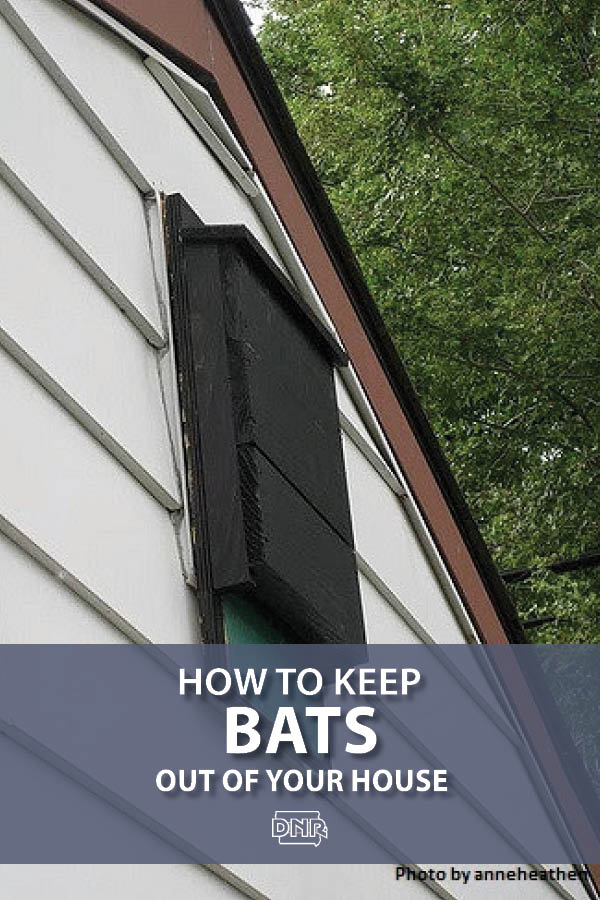Bats are great neighbors - think of all those insects they eat for you - but not roommates. Here's how to give bats their own proper home in your yard but not your house.
 Lone Intruder
Lone Intruder
Sometimes an individual bat, often a lost youngster, will accidentally fly into your house, garage or other building. When this happens their main goal is to escape back outside. The bat will often leave on its own if exterior doors and windows are left open while interior entrances are closed. However, if the bat isn’t leaving by itself, wait until the bat lands on a wall and then cover it with a small box or other container. Slip a piece of cardboard between the container and the wall, gently trapping the bat. Wait until nightfall, and release the bat outside. Remember bats cannot take flight from the ground so either gently tilt the container to one side and the bat should fly out or hold the container against a high wall or the branch of a tree and the bat should cling to the surface and be left there.
Rousing the Roost
Do you have a whole roost of bats in your house? Bats are great neighbors but you may not want them actually in your house so one solution is to build (or buy) and install a bat house. It’s best to mount the house and leave it for a while before you exclude the bats from your house so they know it’s there. However, bats rarely leave an active roost site for another. While the colony is active, go outside at dusk and see where bats are exiting from. Once all the bats have given birth and raised their young for the year, you can then create one-way exits for the bats from the building and seal any other potential entry points. The best time to do this is during September and October. Don’t just wait for the bats to fly out at night and then seal openings as not all bats leave at the same time and some bats may stay in all night, especially during storms. Hopefully, the bats will simply start to use the bat house so you can still benefit from their insect eating abilities.
How to Handle
Avoid directly handling a bat if at all possible, but if you must, wear gloves. Bats don’t attack humans, and will only bite if they feel threatened. Although it is extremely rare, bats are a vector species for rabies, so if you do get bitten by a bat make sure you seek medical attention. Rabies can only be spread through saliva or contact with the central nervous system. Rabies cannot be spread through contact with blood, urine, or droppings (guano).
Bats are an extremely important species for ecosystems and pest management, but for more information on how to remove them from unwanted spaces, read Bat Conservation International’s Guide to Safe and Humane Exclusions.